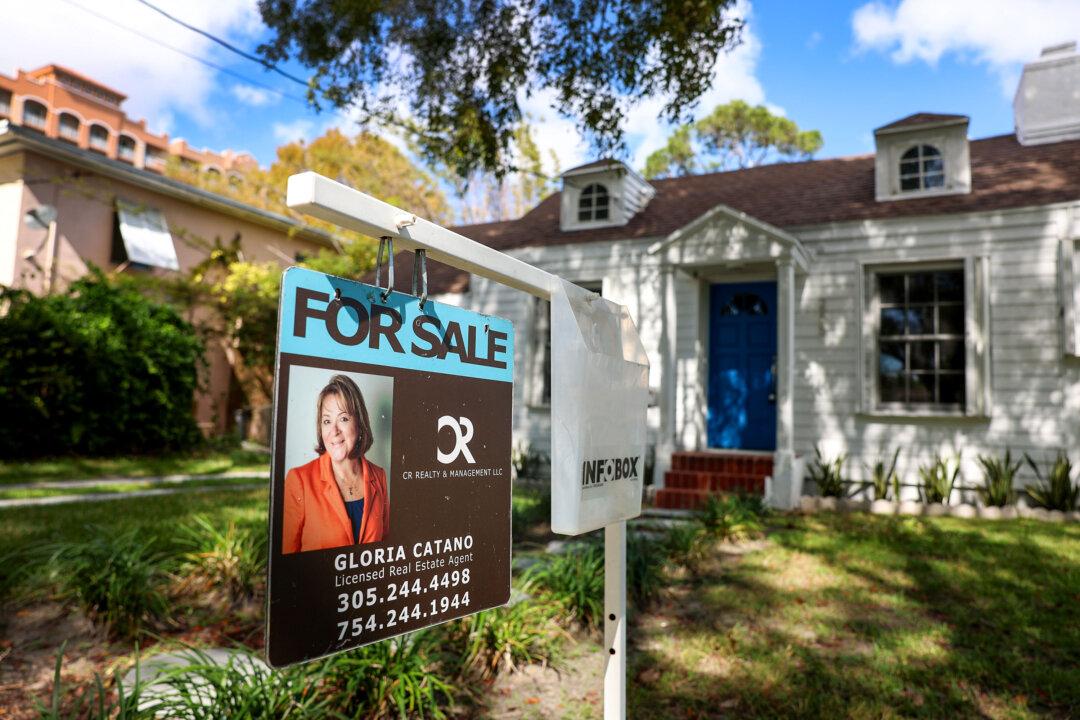Baby boomers have surpassed millennials when it comes to home-buying in the United States, according to a new study by the National Association of Realtors (NAR).
Baby boomers—people aged 58 to 76—accounted for 39 percent of all homebuyers in 2022, compared to 29 percent in 2021. Meanwhile, millennials, who range in age from 24 to 42, experienced a drop in home-buying activity to just 28 percent last year from 43 percent in 2021.
Millennials were the largest homebuying force from 2014 to 2022, NAR said.
Baby boomers may have an easier time purchasing homes now because they don’t necessarily have to rely on savings for a down payment, Jessica Lautz, NAR deputy chief economist and vice president of research, told The Epoch Times.
“These homeowners have a lot of housing equity, and they made substantial gains over the last two years as home prices continue to rise,” she said. “Some of them are now able to pay cash for a new home after selling their house.”
While Generation X, ages 43 to 57, had the highest median household income of any generation, at $114,00, they comprised just 24 percent of homebuyers in 2022.
“If you think about it, every boomer will be over the age of 60 within the next three years, and many of them are thinking about retirement,” Lautz stated. “They have the upper hand in the home-buying market, and they are living healthier and longer so they’re able to make housing trades later in life.”
Strong migration trends exist among many baby boomers to the Sunbelt, whether they’re looking for a permanent move or a second home for the winter months, Lautz indicated. In addition to leading the way in home-buying, baby boomers remained the largest home-seller generation, jumping to 52 percent in 2022 from 42 percent a year earlier.
Florida has always been a popular destination for boomers seeking a retirement home or second residence for their “snowbird” months.
The majority of buyers seen by Brian Tresidder, sales manager with William Raveis Real Estate in Sarasota, Siesta Key, and Lakewood Ranch, are baby boomers from out of state.
“Sarasota is actually one of Florida’s top retirement towns as well as vacation spots, and most of our buyers are from the Northeast,” he told The Epoch Times. “Years ago, it was the Midwest, but I think a lot of people there may have been priced out of the area.”

Like the rest of the nation, inventory is still tight in the City of Sarasota and Sarasota County. Tresidder says the current median sales price of a single-family home in the region is $495,000, up from $449,000 just last year.
“It’s still a seller’s market here,” he added. His clients comprise a combination of those seeking retirement and vacation homes. “For those who haven’t retired yet, they’re purchasing homes that they can rent out, and in a few years, they plan to use it as their permanent retirement home.”
About 50 percent of his buyers are offering cash.
The area remains very popular for a number of reasons.
“Siesta Key has been ranked as one of the top beaches in the country, and Sarasota is a small city that offers a lot to do with an active art scene and restaurants,” Tresidder says. “Another big draw is that it’s just about an hour away from Tampa, which offers lots of tourist attractions.”
Perhaps the biggest perk for Florida living is the fact that there’s no state income tax.
“Since there’s so much tourism there, the state makes up the revenue from taxes on hotels and short-term rentals,” Tresidder said.
Arizona is also high on the list for home-buying boomers.
“We’re seeing people from the Northeast, Washington, Oregon, and California who are looking for a great quality of life but a lower cost of living,” Eric Gibbs, president of the Arizona Association of Realtors, told The Epoch Times.
“There’s also a large amount of construction for 55-plus communities of single-family homes, condos, and RV parks. People want the warm climate, amenities, and access to a lot of outdoor activities.”
Businesses have also been expanding into Arizona, and new condo developments are sprouting up throughout the area.
“I’ve lived in Tucson for many years and have watched it go from a sleepy little town to large, spread-out community,” Gibbs said.
Popular relocation spots within the state include Phoenix, Scottsdale, Tucson, and Prescott.
“Prescott is starting to experience a lot of growth and is even attracting people from downtown Phoenix who want to get away from the congestion of city life,” he said.
Gibbs said the newcomers are a mixture of people seeking second homes and retirees who have decided to make the Grand Canyon State their permanent residence. Some settle on condo developments with amenities such as pools and tennis courts, while others opt for single-family homes in newer developments.
In the latest Redfin report, the current median sales price of a single-family home in Arizona is $407,500. In Tucson, the median is $309,000; in Phoenix, $400,000; and in Prescott, it’s $499,900. In Sedona, a vacation destination, the median sales price skyrockets to $923,750.
“Sedona has always been something on its own,” Gibbs said. “It’s a beautiful place, and the tourism there is phenomenal.”

According to the NAR report, 26 percent of all buyers were first-time buyers, the lowest since the NAR began tracking data, and a decrease from 34 percent in 2021. More than 70 percent of younger millennials and 46 percent of older millennials were first-time buyers. By comparison, only 21 percent of Generation X and 9 percent of younger boomers were first-time purchasers.
Generation Z, aged 18 to 23, now accounts for 4 percent of homebuyers, a slight increase from 2 percent in 2021. Almost 30 percent of Gen Z moved directly from a family member’s home into homeownership.
“As the youngest generation of homebuyers and sellers, it’s encouraging to see Gen Z entering the market,” Lautz said. “Their desire for homeownership is strong, and many are relying on family support systems to help make their first real estate purchase.”
All generations agreed that the most common reason to sell was to be closer to friends and family. Older generations were also more likely to sell due to retirement, while younger generations cited the desire for a larger home and job relocation as top reasons to sell their home.
The most common type of home purchase continues to be the single-family detached home, with about 1,800 square feet of space, three bedrooms, and two bathrooms. Factors influencing buyers’ choices include quality of neighborhoods, convenience of shopping, walkability, and convenience of public transportation.
The report indicated that, overall, buyers are relocating at much farther distances—a median of 50 miles as compared to just 15 miles last year. Younger boomers moved the farthest, at 90 miles, followed by older boomers at 60 miles and millennials at just 15 miles. Buyers also expect to live in their homes for 15 years, a slight increase from 12 years in 2021.







